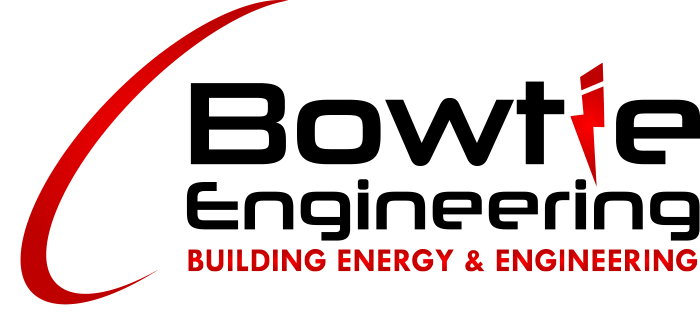BENEFITS OF READING THIS BLOG
- Enhanced Safety: Learn how IR thermography can help detect electrical problems early, preventing accidents and fires.
- Cost Savings: Discover how proactive maintenance using IR thermography can save you money by reducing unplanned downtime and costly repairs.
- Efficient Operations: Understand how this technology can optimize your electrical systems, improving efficiency and reducing energy consumption.
- Longevity of Equipment: Find out how IR thermography can extend the lifespan of your electrical equipment by identifying issues before they cause major damage.
- Compliance and Regulations: Stay informed about the latest standards and regulations related to electrical inspections.
Introduction:
In the complex world of electrical engineering, the ability to foresee potential problems before they spiral into disasters is invaluable. Electrical systems, omnipresent in our modern lives, are often hidden from view. These systems power our homes, workplaces, industries, and more, making them essential but also potentially hazardous if not maintained properly. Fortunately, there’s a superhero in the realm of electrical maintenance – Infrared (IR) thermography. In this blog, we will embark on a journey into the world of IR thermography and explore how this cutting-edge technology can unveil hidden electrical issues, enhance safety, save costs, optimize operations, and prolong the life of equipment.
I. Benefits of Using IR Thermography
-
Enhanced Safety
The paramount benefit of reading this blog is the knowledge it imparts about enhancing safety through IR thermography. Electrical faults, such as loose connections or overloaded circuits, can generate excessive heat and pose severe fire hazards. Traditional visual inspections may not detect these issues until it’s too late. IR thermography, on the other hand, allows you to identify these hotspots long before they cause damage or endanger lives.
Imagine a scenario in which a manufacturing plant’s electrical panel shows no visible signs of trouble. However, an IR thermographic scan reveals a dangerously overheating connection. Prompt intervention not only prevents a catastrophic fire but also keeps the production line running smoothly. This proactive approach to safety is a hallmark of IR thermography.
-
Cost Savings
Another compelling reason to explore IR thermography is its potential for cost savings. Unplanned downtime due to electrical failures can be financially crippling for any organization. Repairs during emergencies are not only expensive but also disruptive. IR thermography enables you to schedule maintenance when it’s convenient and cost-effective, preventing costly breakdowns and associated financial losses.
Consider a data center that relies on continuous uptime to serve clients. Through regular IR thermographic inspections, they identify a failing circuit breaker, which is promptly replaced during a planned maintenance window. This proactive approach not only averts potential data loss but also saves the company substantial sums in emergency repairs and lost revenue.
-
Efficient Operations
Efficiency is the lifeblood of any operation, and electrical systems play a crucial role in this equation. Overloaded circuits, inefficient components, or imbalanced loads can result in energy wastage and decreased operational efficiency. Understanding how IR thermography can optimize your electrical systems is a key takeaway from this blog.
Think about a commercial building with complex HVAC systems. IR thermography can identify overheating motors or faulty components, allowing maintenance teams to intervene before system failure. The result? Reduced energy consumption, lower utility bills, and a more comfortable environment for occupants.
-
Equipment Longevity
In today’s world, equipment costs are a significant part of any budget. Therefore, extending the lifespan of electrical equipment is essential for fiscal responsibility. IR thermography plays a pivotal role in achieving this goal. Detecting issues early, such as deteriorating insulation or overloaded transformers, allows for timely intervention, thereby prolonging the life of equipment.
Imagine a solar power installation where an IR thermographic scan reveals a problematic connection in a critical inverter. Addressing this issue prevents costly inverter replacement and ensures the solar farm continues to generate power efficiently for years to come.
-
Compliance and Regulations
Staying compliant with electrical safety standards and regulations is not just a legal obligation; it’s a moral imperative. The knowledge shared in this blog will help you stay abreast of the latest standards and regulations related to electrical inspections. Compliance isn’t just about avoiding penalties; it’s about creating a safe environment for everyone.
II. How IR Thermography Works
To harness the power of IR thermography, it’s essential to understand the principles behind it and the equipment needed for its implementation.
Principles of Infrared Imaging
At its core, IR thermography relies on the fact that all objects emit infrared radiation, the amount of which is directly related to their temperature. Infrared cameras, or thermographic cameras, detect and visualize this radiation, creating images known as thermograms. These images display temperature variations in different colors, making it easy to identify hotspots.
This non-contact, non-destructive technique allows for comprehensive inspections of electrical systems without disrupting operations. By capturing temperature data across the entire system, IR thermography provides valuable insights into the system’s health.
Equipment Needed
To conduct IR thermographic inspections, you’ll need a few essential tools:
- Infrared Camera: The heart of the operation, these cameras come in various forms, from handheld devices to sophisticated, high-resolution models. The choice depends on the complexity of your inspections and budget.
- Preparation Tools: In some cases, you may need to prepare the equipment, such as removing panels or covers, to obtain a clear line of sight for the camera.
- Analysis Software: Specialized software is used to analyze the data collected by the infrared camera, allowing you to identify anomalies and generate reports.
Understanding the equipment and its capabilities is crucial for effective IR thermography.
III. Applications of IR Thermography in Electrical Systems
Now that we’ve covered the benefits and the basic principles of IR thermography, let’s delve into its practical applications within electrical systems.
-
Preventive Maintenance
One of the primary uses of IR thermography is preventive maintenance. By regularly scanning electrical equipment, you can identify potential issues before they lead to downtime or accidents. For example, loose electrical connections generate heat, which can be detected through thermography. Addressing these problems proactively can extend the life of your equipment and reduce the risk of fires.
-
Fault Detection
IR thermography is incredibly effective at detecting faults in electrical systems. Faulty components often heat up before they fail. Thermographic scans can identify these temperature anomalies, allowing you to replace or repair components before they cause disruptions or safety hazards.
-
Troubleshooting
When electrical problems arise, IR thermography is an invaluable troubleshooting tool. Rather than relying on guesswork or invasive inspections, you can use thermography to pinpoint the exact location of the issue. This saves time and resources and minimizes downtime.
IV. Best Practices
To make the most of IR thermography, it’s essential to follow best practices. Here are some tips for effective IR thermography inspections:
-
Regular Inspections:
Implement a regular inspection schedule to catch issues early.
-
Proper Training:
Ensure that operators are adequately trained in using IR cameras and interpreting results.
-
Consistency:
Maintain consistent inspection conditions, such as temperature and lighting, to obtain reliable results.
-
Document Findings:
Keep detailed records of inspections, including thermograms and reports.
Prompt Action: Act swiftly on the findings of thermographic inspections to prevent problems from escalating.
V. Conclusion
In conclusion, the power of IR thermography in uncovering hidden electrical issues cannot be overstated. It offers enhanced safety by detecting problems before they become hazards, leads to substantial cost savings through preventive maintenance, optimizes operations by identifying inefficiencies, and extends the lifespan of equipment. Furthermore, staying compliant with regulations ensures that your systems are not only efficient but also safe for everyone involved.
As you embark on your journey to implement IR thermography in your electrical maintenance program, remember that knowledge and preparation are your allies. Equip yourself with the right tools and training, and follow best practices to make the most of this powerful technology. With IR thermography, you have the means to transform your electrical systems into safer, more efficient, and longer-lasting assets, securing a brighter and more reliable future for your organization.
 Skip to content
Skip to content 
